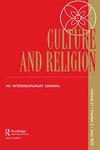The ideology of idoneousness: Mary Anne Hilton and Mercedes Gutierrez as symbols of women’s exclusion from spaces of power in Chilean Pentecostalism
IF 0.5
0 RELIGION
引用次数: 0
Abstract
ABSTRACTThis article describes the ideology of idoneousness as one of the Pentecostal principles that explain the forms taken by the integration of women in structures of religious power. Their access to and exclusions from power in Chilean Pentecostalism is concealed through the sexualisation of roles based on the stronger masculine/weaker feminine (virile/mulieris) duality, underpinned by the head/hand organic frame. This conceptual proposal was complemented with Pierre Bourdieu’s constructivist structuralism, and focuses on two women who formed part of the foundational myth of Pentecostalism: Mary Anne Hilton and Mercedes Gutierrez. In our methodology we included the analysis of the two institutional journals from the early history of the Pentecostal church history in Chile, namely: Chile Pentecostal (1910–1927 and from (1933–1979), and Fuego de Pentecostés (1928–2019).KEYWORDS: PentecostalismChilewomenidoneousnesschurch leadership Disclosure statementNo potential conflict of interest was reported by the author(s).Notes1. Hereinafter Mary Hilton.2. We will not resort to the sociological tradition to define the concept of ideology, so widely developed and discussed, but which, at the same time, has lost relevance over other concepts such as Vattino’s weak thought or Derrida’s deconstruction. But for our case, the concept of ideology seems more appropriate, although anachronistic, to strengthen the concept of idoneousness.3. Laura Ester Contreras. ‘A los jóvenes evangélicos’. Chile Evangélico, 1909, nº 12, pp. 3–4; Laura Ester Contreras. ‘La anchura del amor del Padre’. Chile Evangélico. Concepción, 1909, nº 18, p. 1; Laura Ester Contreras. “¿Por qué buscáis entre los muertos al que vive? Chile Evangélico. 1910, nº 22, pp. 1–2; Laura Ester Contreras. ‘Ecos de la Conferencia Metodista’. Chile Evangélico, 1910, nº 24, pp. 1–2; Laura Ester Contreras. ‘Alfa y Omega’. Chile Evangélico. 1910, nº 30, p. 2; Laura Ester Contreras. ‘La pesca milagrosa’. Chile Evangélico. 1910, nº 33, pp. 1–2; Laura Ester Contreras. ‘Hojas de sanidad para las naciones’. Chile Evangélico. 1910, nº 35, p. 2; Laura Ester Contreras. ‘No temáis’. Chile Evangélico. 1910, nº 45, p. 19.4. Chile Evangélico. 1909, nº 9, p. 1; Chile Evangélico. 1909, nº 10, p. 3; Chile Evangélico. 1909, nº 10, p. 3.5. Chile Evangélico, 1909, nº 12, p. 4; Chile Evangélico. 1909 nº. 13; Chile Evangélico.1909, nº, 14, p. 3; Chile Evangélico, 1910, nº. 3; Chile Evangélico. 1909, nº. 16, p. 3.6. See trip of Mary Hilton to the United States of North America in: Chile Pentecostal, 1913, 40: 7.7. ‘Teachers and volunteers of the Civic Literacy Corps were yesterday awarded with honourable distinctions for their labours’. (La Mañana, June 14, 1948, 2).8. This was an independent newspaper published in the city of Concepción by a Presbyterian pastor (prone to the Pentecostal movement) between September 1909 and November 1910. During its short existence, this newspaper covered the details of the nascent Chilean Pentecostal movement and its rupture especially with the Methodist Episcopal Church in Chile.Additional informationFundingThis article was prepared within the framework of the Fondecyt Regular project n° 1211321 financed by the National Agency for Research and Development (ANID) whose lead researcher is Professor Dr. Miguel Mansilla Agüero and the Fondecyt Initiation project n° 11181150 of Professor Dr. Luis Orellana Urtubia.偶像化的意识形态:玛丽·安妮·希尔顿和梅塞德斯·古铁雷斯作为智利五旬节派中女性被排除在权力空间之外的象征
摘要本文描述了作为五旬节派原则之一的偶像性意识形态,它解释了妇女在宗教权力结构中的整合所采取的形式。在智利的五旬节派信仰中,她们获得权力和被排除在权力之外,这是通过基于更强的男性/更弱的女性(阳刚体/多体)二元性的角色性化来掩盖的,这种二元性是由头/手的有机框架支撑的。皮埃尔·布迪厄(Pierre Bourdieu)的建构主义结构主义补充了这一概念,并将重点放在了构成五旬节派基础神话一部分的两位女性身上:玛丽·安妮·希尔顿(Mary Anne Hilton)和梅赛德斯·古铁雷斯(Mercedes Gutierrez)。在我们的方法中,我们纳入了对智利五旬节派教会历史早期历史的两份机构期刊的分析,即:智利五旬节派(1910-1927年和1933-1979年)和Fuego de pentecost(1928-2019年)。关键词:五旬节派;智利妇女;教会领导;披露声明作者未报告潜在的利益冲突。以下简称玛丽·希尔顿我们不会诉诸社会学传统来定义意识形态的概念,尽管意识形态的概念得到了广泛的发展和讨论,但与此同时,它与瓦蒂诺的弱思想或德里达的解构等其他概念已经失去了相关性。但就我们的情况而言,意识形态的概念似乎更适合于强化理想化的概念,尽管这是不合时宜的。劳拉·伊斯特·孔特雷拉斯。“A los jóvenes evangsamicos”。智利,1909年,第12卷,第3-4页;劳拉·伊斯特·孔特雷拉斯。" La anchura del amor del Padre "智利Evangelico。Concepción, 1909, nº18,第1页;劳拉·伊斯特·孔特雷拉斯。“可怜的ququire buscáis entre los muertos al que vive?”智利Evangelico。1910年,第22卷,第1-2页;劳拉·伊斯特·孔特雷拉斯。“Ecos de la Conferencia metdista”。智利,1910年,第24卷,第1-2页;劳拉·伊斯特·孔特雷拉斯。阿尔法-欧米茄。智利Evangelico。1910年,nº30,第2页;劳拉·伊斯特·孔特雷拉斯。La pesca milagrosa。智利Evangelico。1910, nº33,第1-2页;劳拉·伊斯特·孔特雷拉斯。" Hojas de sanidad para las nacones "智利Evangelico。1910年,nº35,第2页;劳拉·伊斯特·孔特雷拉斯。“没有temais”。智利Evangelico。1910年,第45卷,第19.4页。智利Evangelico。1909年,第9期,第1页;智利Evangelico。1909年,第10期,第3页;智利Evangelico。1909年,第10期,第3.5页。智利,1909年,第12期,第4页;智利Evangelico。1909 nº。13;智利Evangelico。1909, nº,14,第3页;智利,1910年,n .;3;智利Evangelico。1909年,nº。16,第3.6页。见玛丽·希尔顿到北美合众国之旅,见《智利五旬节》,1913,40:7.7。“昨天,公民扫盲队的教师和志愿者因他们的辛勤劳动被授予荣誉荣誉。”(La Mañana, 1948年6月14日,2)。这是一份独立的报纸,由一位长老会牧师(倾向于五旬节派运动)于1909年9月至1910年11月在Concepción市出版。在其短暂的存在期间,这份报纸报道了智利新生的五旬节派运动及其与智利卫理公会的破裂的细节。本文是在国家研究与发展机构(ANID)资助的Fondecyt常规项目(编号1211321)框架内编写的,该项目的首席研究员是Miguel Mansilla ag ero教授和Luis Orellana Urtubia教授的Fondecyt启动项目(编号11181150)。
本文章由计算机程序翻译,如有差异,请以英文原文为准。
求助全文
约1分钟内获得全文
求助全文

 求助内容:
求助内容: 应助结果提醒方式:
应助结果提醒方式:


